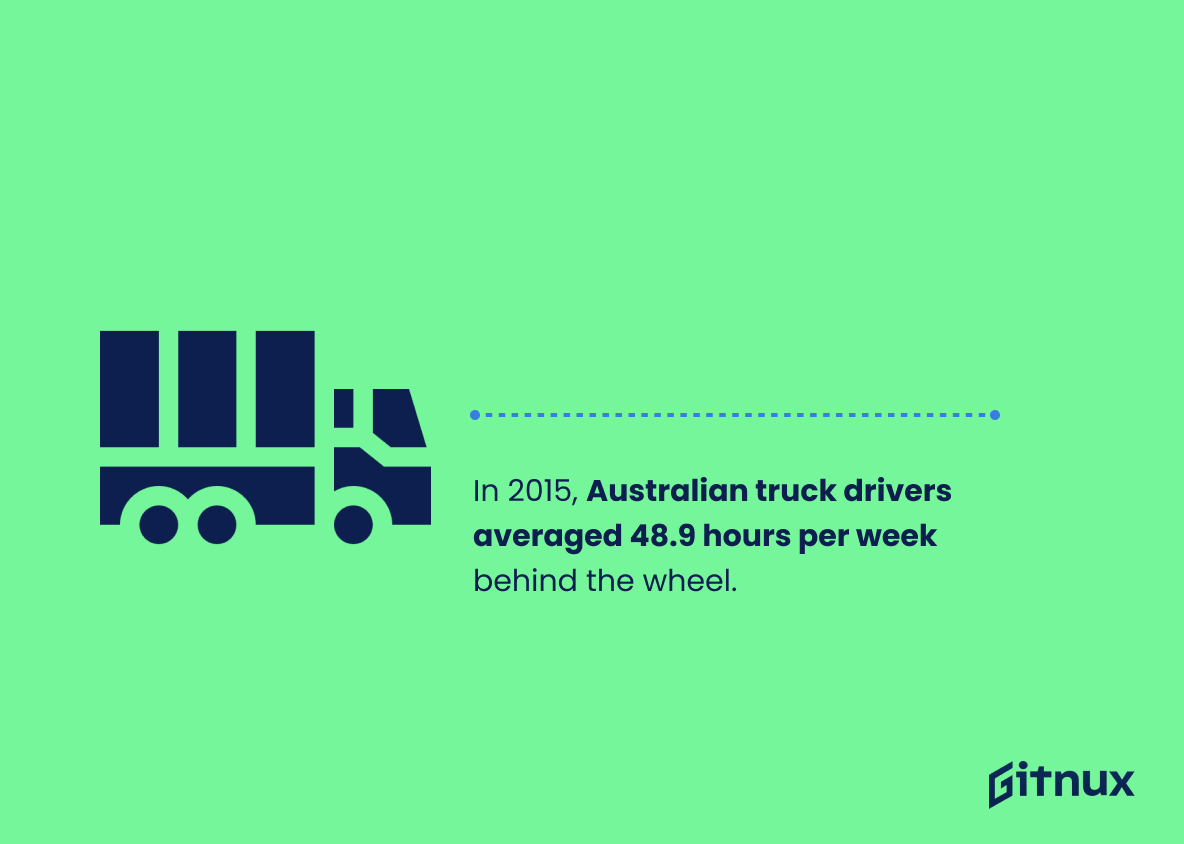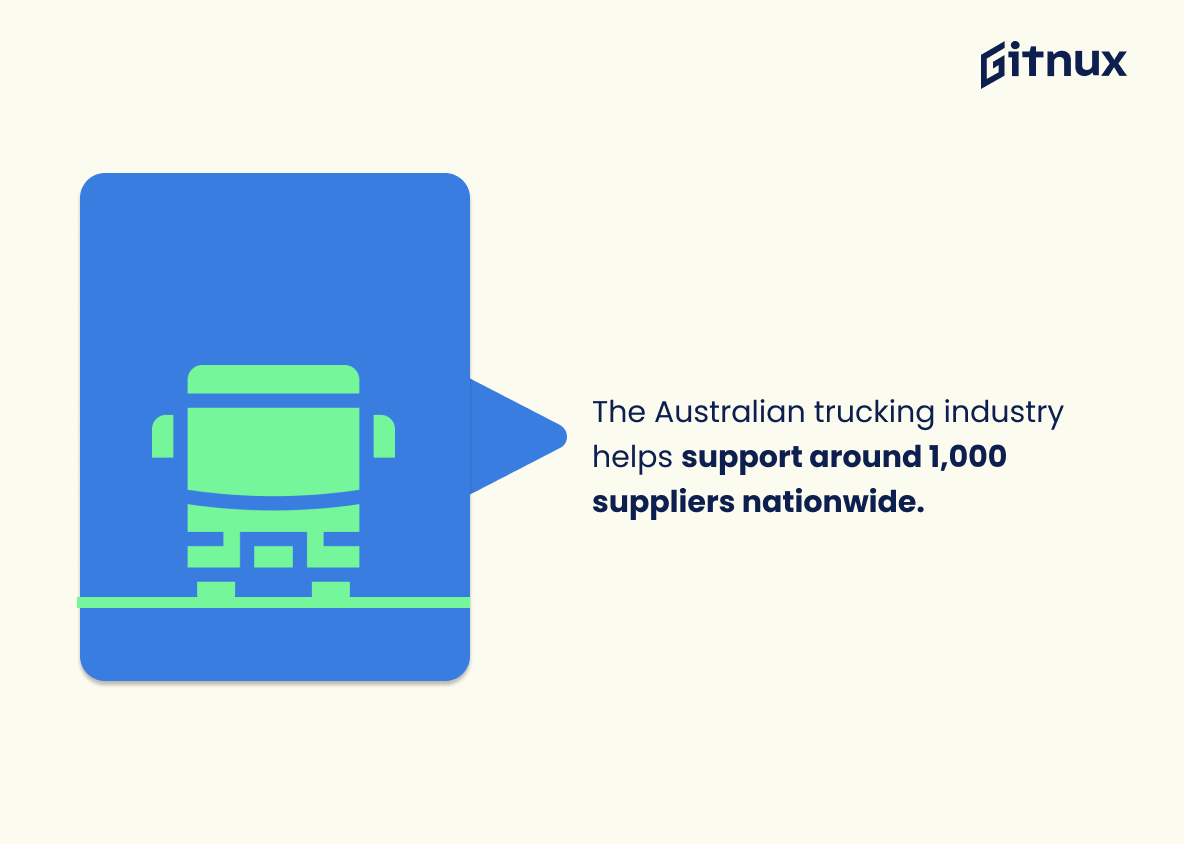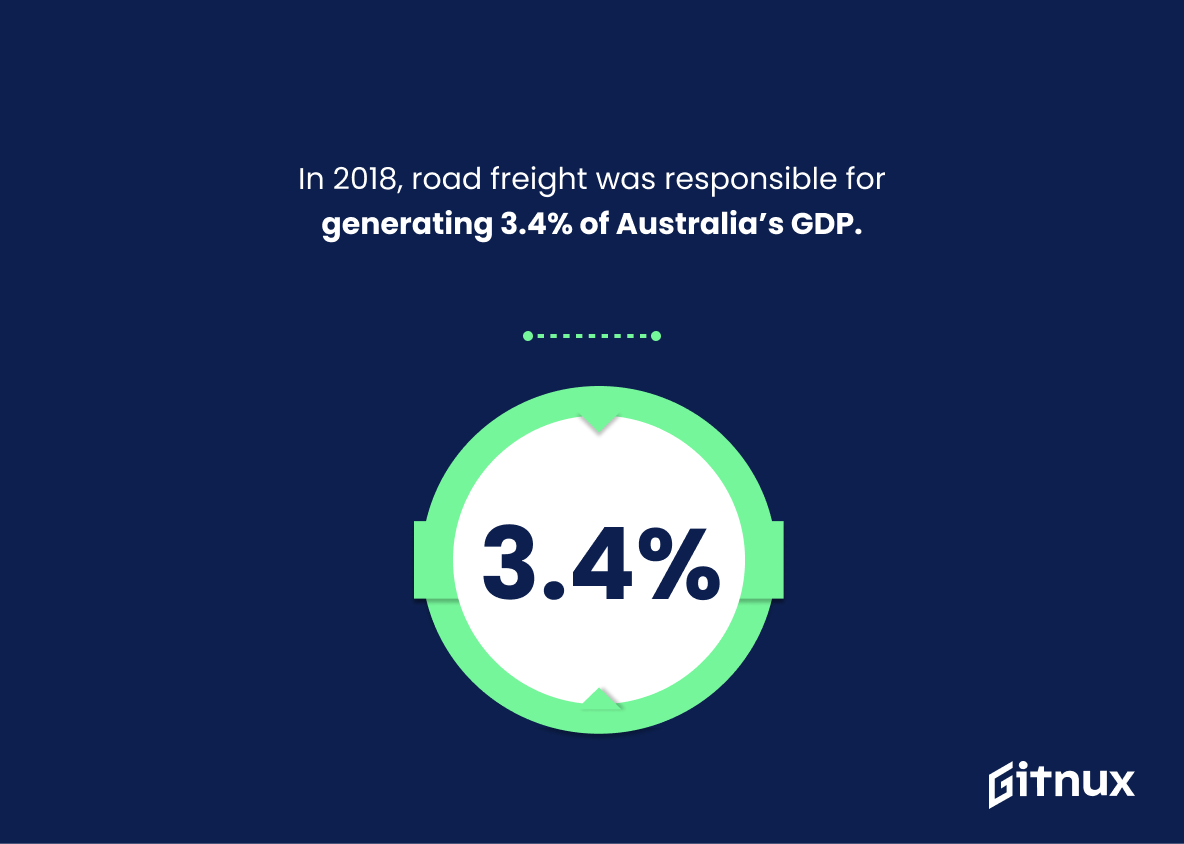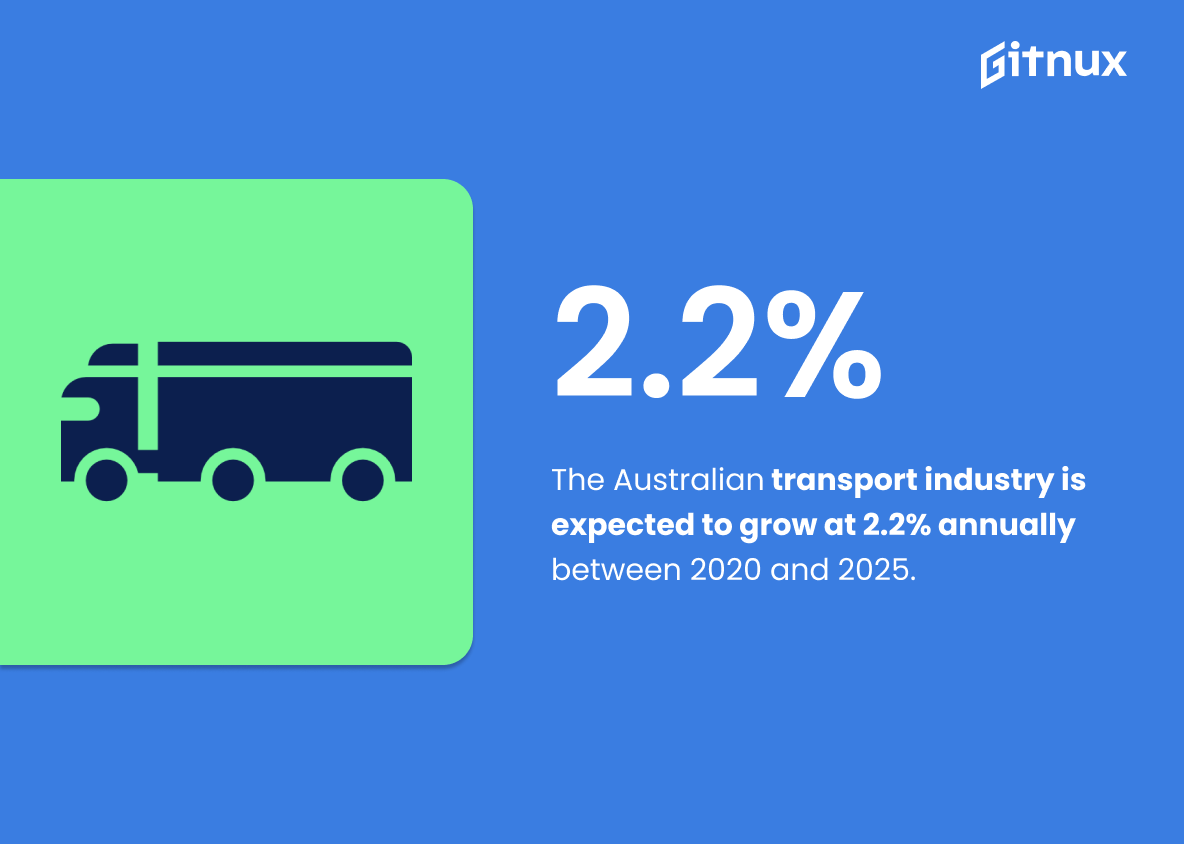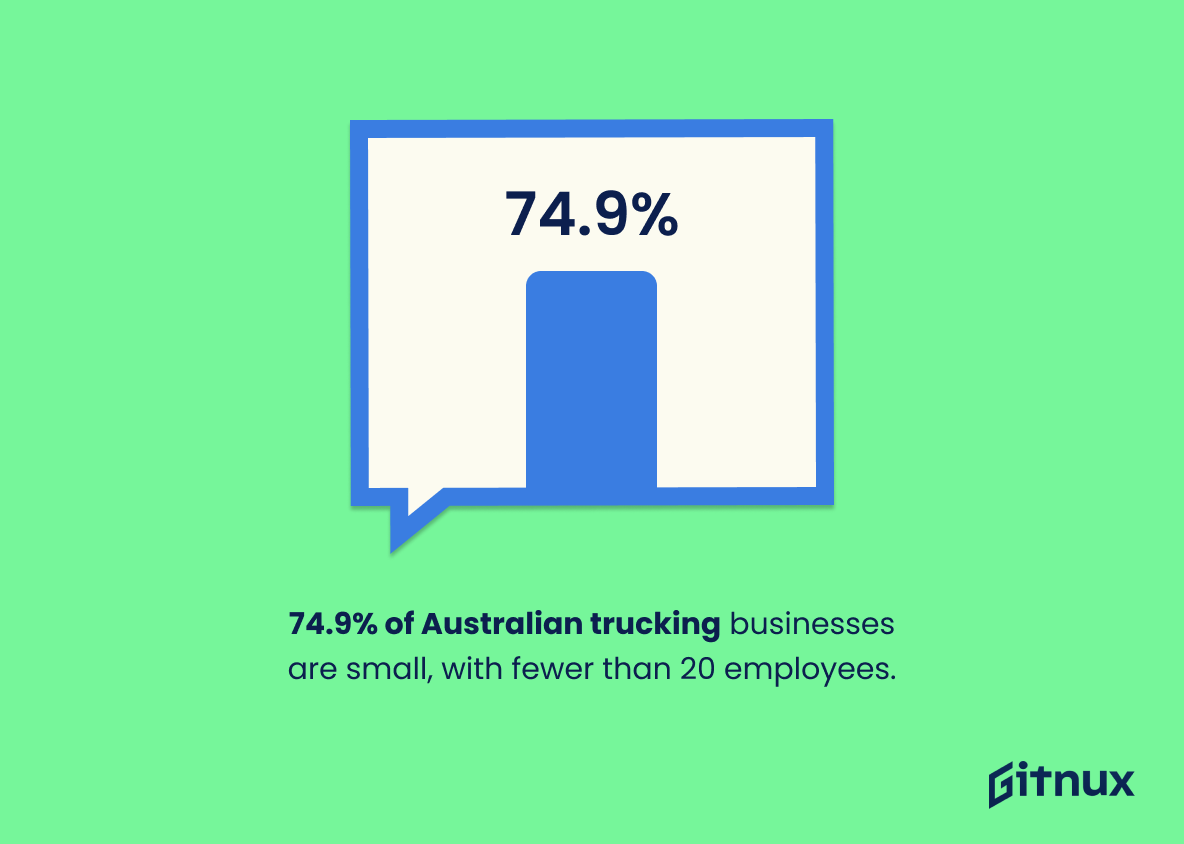The Australian trucking industry is a vital part of the nation’s economy, with over 200,000 people employed in this sector. Approximately 80% of non-bulk freight is transported by road and the revenue generated from this industry was around AUD$47.27 billion in 2018. The transport industry comprises at least 41,200 businesses and heavy trucks were involved in 119 fatal crashes during that same year.
On average, each heavy freight vehicle travels 68,300 kilometres per year while consuming 6.1 billion litres of fuel annually across Australia as a whole. Long haul drivers make up 38.4% of the workforce within this sector and have an average age of 47 years old; they spend 48 hours driving their vehicles every week on average too. In 2015 it was estimated that 2.5% of total greenhouse gas emissions came from road freight activities – not to mention 1,000 suppliers nationwide who are supported by these operations as well.
In terms of economic contribution to GDP (Gross Domestic Product), 3
This statistic is a testament to the sheer size and importance of the Australian trucking industry. It highlights the fact that the industry is a major employer in the country, providing jobs to a large number of people. This statistic is a reminder of the vital role the trucking industry plays in the Australian economy and society.
In 2018, the Australian road freight transport industry’s revenue was around AUD$47.27 billion.
This statistic is a testament to the immense size and importance of the Australian road freight transport industry. It highlights the sheer magnitude of the industry’s revenue, which is a clear indication of its significance to the Australian economy. It also serves as a reminder of the vital role that trucking plays in the country’s transportation infrastructure, and the need for continued investment in the industry.
Australian Trucking Industry Statistics Overview
The Australian transport industry comprises of at least 41,200 businesses.
This statistic is a testament to the sheer size and scope of the Australian transport industry. It highlights the sheer number of businesses that make up the industry, demonstrating the importance of the trucking industry to the Australian economy. It also serves as a reminder of the sheer number of people employed in the industry, and the impact it has on the lives of many Australians.
The average distance travelled per heavy freight vehicle per year is 68,300 kilometres.
This statistic is a telling indication of the sheer scale of the Australian trucking industry. 68,300 kilometres is a staggering amount of distance to cover in a single year, and it speaks to the immense amount of goods and services that are transported by heavy freight vehicles across the country. It is a testament to the hard work and dedication of truckers, and the vital role they play in keeping the nation’s economy running.
In 2015, truck drivers spent an average of 48.9 hours per week driving their trucks in Australia.
This statistic is a telling indication of the amount of time truck drivers in Australia are spending on the road. It highlights the dedication and commitment of these drivers to their profession, as well as the long hours they are putting in to ensure goods are delivered safely and on time. It also serves as a reminder of the importance of the trucking industry in Australia, and the need for continued investment in infrastructure and safety measures to ensure the safety of these drivers.
The Australian trucking industry helps support around 1,000 suppliers nationwide.
This statistic is a testament to the far-reaching impact of the Australian trucking industry. It highlights the fact that the industry is not only a major employer, but also a major contributor to the economy, providing support to a vast network of suppliers across the country.
In 2018, road freight was responsible for generating 3.4% of Australia’s GDP.
This statistic is a testament to the importance of the Australian trucking industry in the nation’s economy. It highlights the significant contribution of road freight to the country’s GDP, demonstrating the industry’s immense value. This is especially pertinent in the context of a blog post about Australian trucking industry statistics, as it provides a tangible measure of the industry’s economic impact.
The Australian transport industry is expected to grow at 2.2% annually between 2020 and 2025.
This statistic is a key indicator of the future of the Australian transport industry, providing insight into the potential for growth and development over the next five years. It is an important piece of information for anyone interested in the Australian trucking industry, as it can help inform decisions about investments, hiring, and other business strategies. With this statistic, businesses can plan for the future and make sure they are well-positioned to take advantage of the expected growth.
74.9% of Australian trucking businesses are small, with fewer than 20 employees.
This statistic is a telling indication of the Australian trucking industry’s makeup; it reveals that the majority of businesses in the industry are small, with fewer than 20 employees. This highlights the importance of small businesses in the trucking industry, and the need for policies and initiatives that support their growth and success. It also serves as a reminder of the need for a level playing field for small businesses, so that they can compete with larger companies and remain viable. This statistic is an important piece of the puzzle when it comes to understanding the Australian trucking industry.
Conclusion
The Australian trucking industry is a major contributor to the nation’s economy, employing over 200,000 people and generating revenue of around AUD$47.27 billion in 2018. Approximately 80% of non-bulk freight is transported by road with heavy trucks travelling an average distance of 68,300 kilometres per year and consuming 6.1 billion litres of fuel annually. The transport industry comprises at least 41,200 businesses with 74.9% being small operations that employ fewer than 20 staff members each.
In terms of safety on the roads, there were 119 fatal crashes involving heavy trucks in Australia during 2018 which was a 36% reduction from 2012 figures due to government investment into infrastructure projects as well as improved driver training initiatives for long haul drivers who represent 38.4% of the workforce and have an average age 47 years old spending 48 hours driving their vehicles every week on average according to 2015 statistics . Mechanical defects are also responsible for 16 percent 1of all truck accidents while workplace fatalities rank fifth among causes within this sector accounting for 14 percent 2in 2014 data..
Overall it can be seen that despite some challenges faced by the Australian trucking industry such as mechanical issues or fatigue related incidents , its contribution towards economic growth through employment opportunities , efficient transportation services provided across various industries along with investments made into improving safety standards make it one if not thee most important sectors within our country today .
References
0. – https://www.truck.net.au
1. – https://www.abs.gov.au
2. – https://www.ibisworld.com
3. – https://www.aph.gov.au
4. – https://www.data.gov.au


